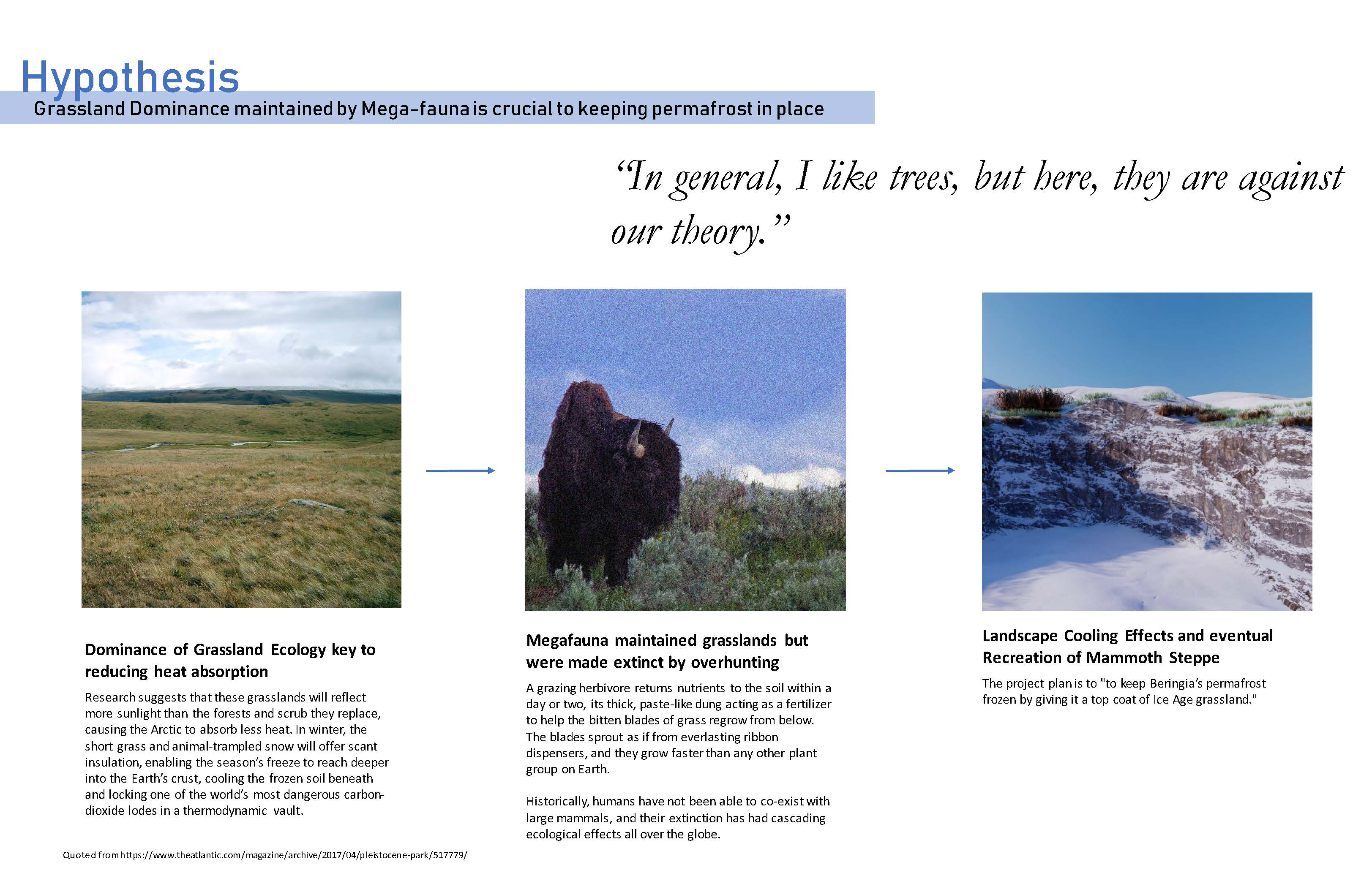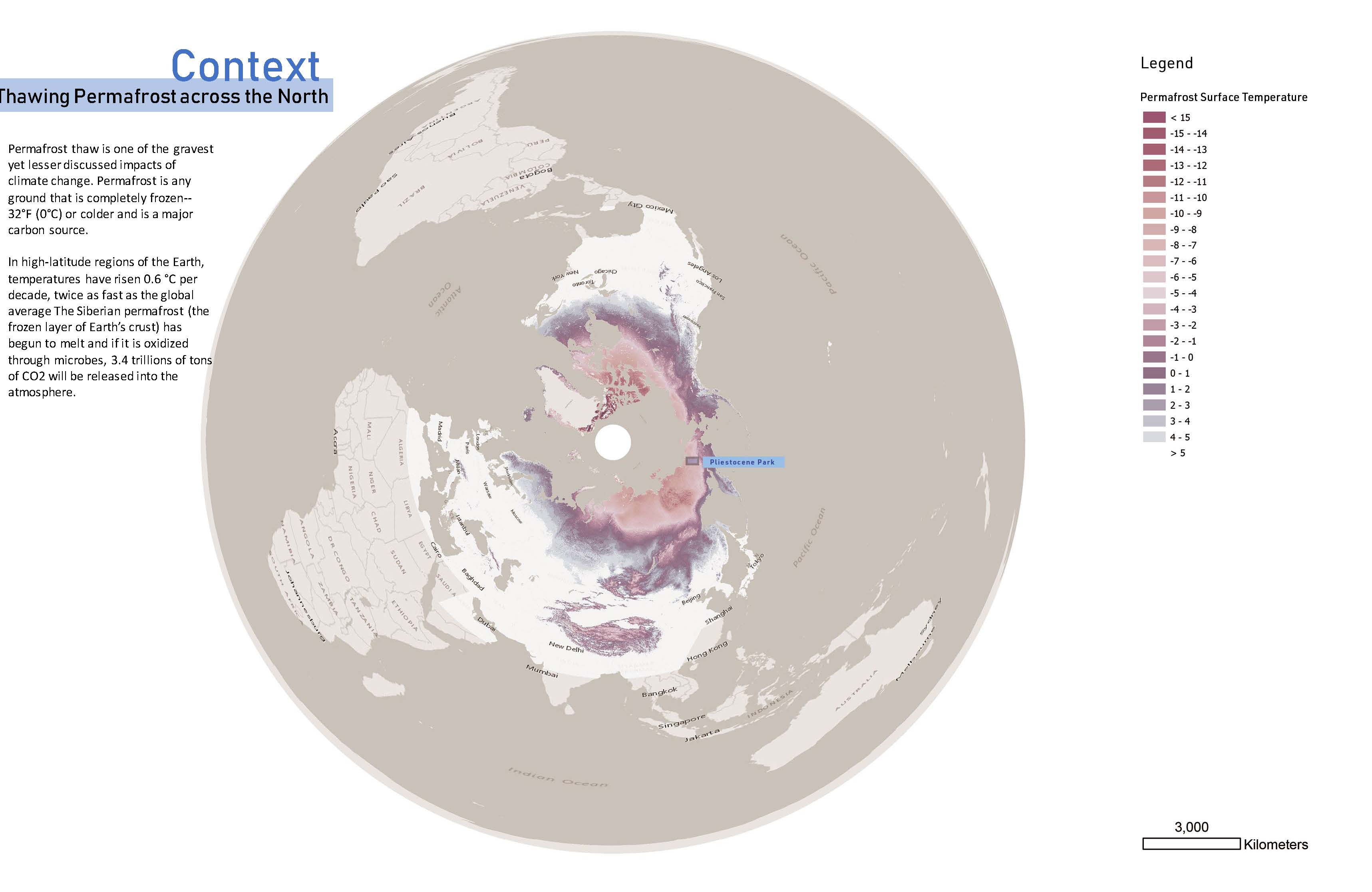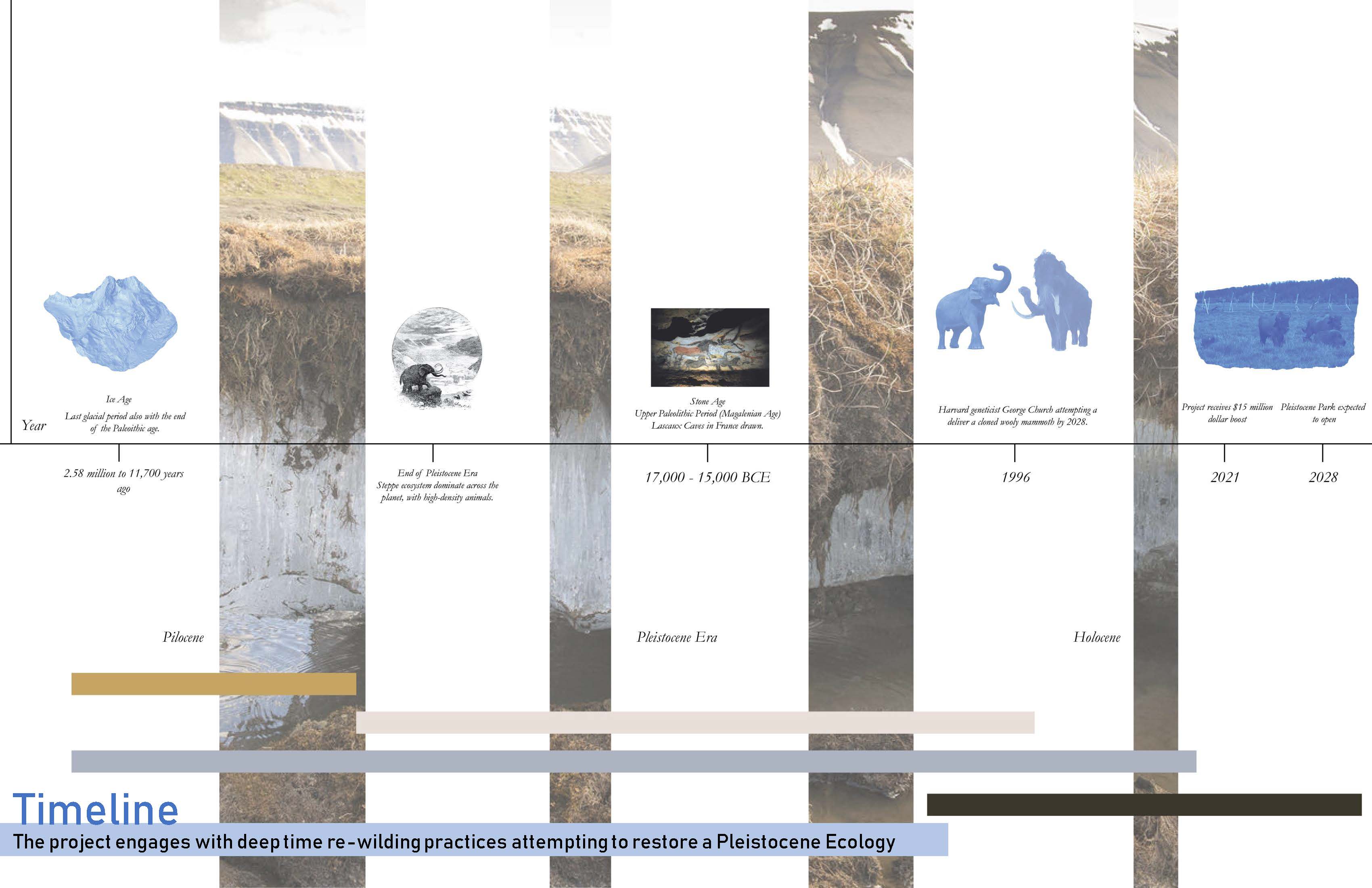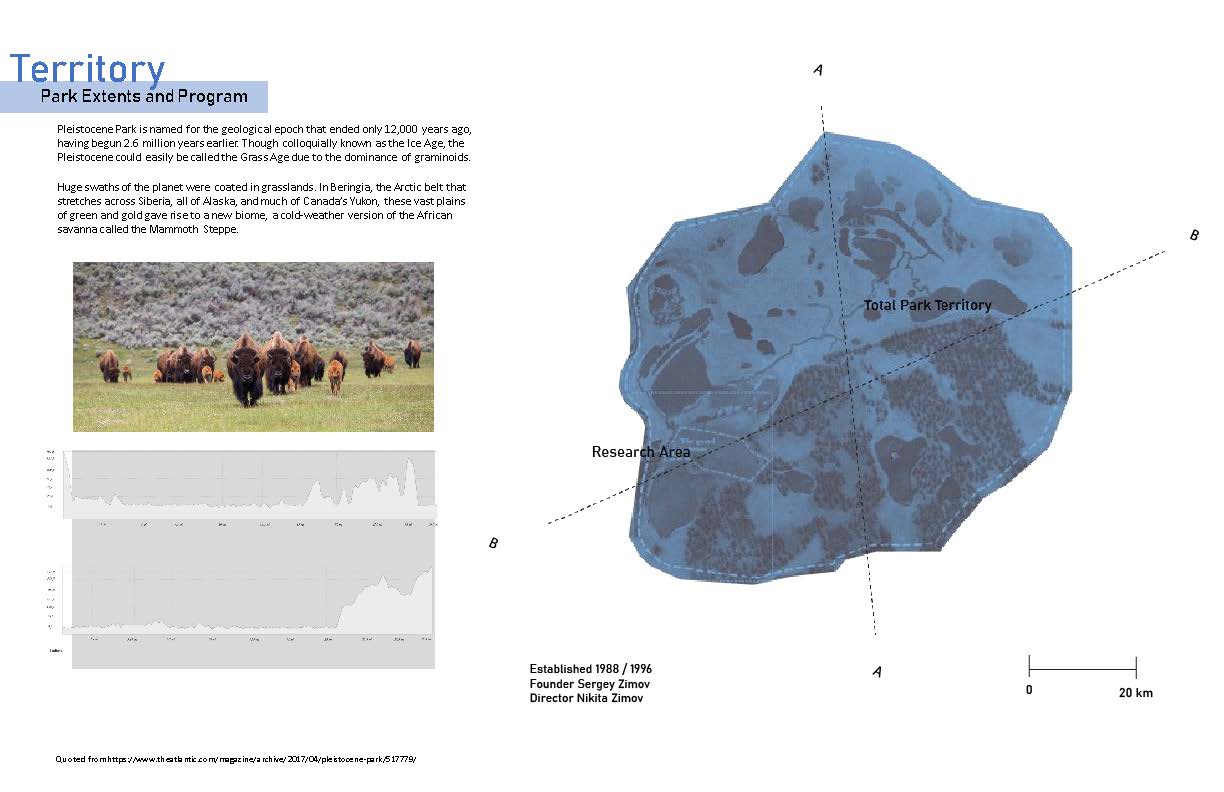3. Pleistocene Park

From Pleistocene Park: Climate By Design
Pleistocene Park is a project in northeastern Siberia, Russia. As an experiment in ecosystem restoration aims to re-create the northern subarctic steppe grassland ecosystem and is being led by Russian scientists Sergey Zimov and Nikita Zimov. It is predicated on the premise that megafauna of the Pleistocene are vital to maintaining permafrost, and restoration of these mammals has the potential to slow thawing and as a result, stop carbon from being released into the atmosphere.
Permafrost is any ground that is completely frozen-- 32°F (0°C) or colder and is a major carbon source. The Siberian permafrost (the frozen layer of Earth’s crust) has begun to melt and if it is oxidized through microbes, 3.4 trillion of tons of CO2 will be released into the atmosphere. The scientists believe that restoring the ecosystem of the “mammoth steppes” could help slow this shift. This change from the tundra to grassland will result in a raised ratio of energy emission to energy absorption of the area, leading to less thawing of permafrost and thereby less emission of greenhouse gases.
The hypothesis the project makes is that overhunting, and not climate change, was primarily responsible for the extinction of wildlife and the disappearance of the grasslands at the end of the Pleistocene epoch. The other tenant of the project is to create a genetic hybrid of the wooly mammoth as a keystone species in this restoration. The funding was raised by the new genetics and bioscience company Collasal, co-founded by Harvard Medical School Professor of Genetics, George Church, and tech entrepreneur Ben Lamm.


Context.

Timeline.


Ecological Transformations Driven by Melt.
 Active Layers
Active Layers Expo Out of Use
Expo Out of Use

Elevation among an artificial landscape.




